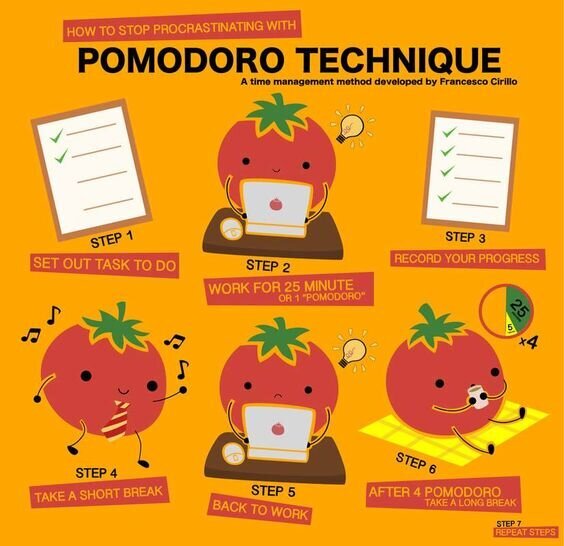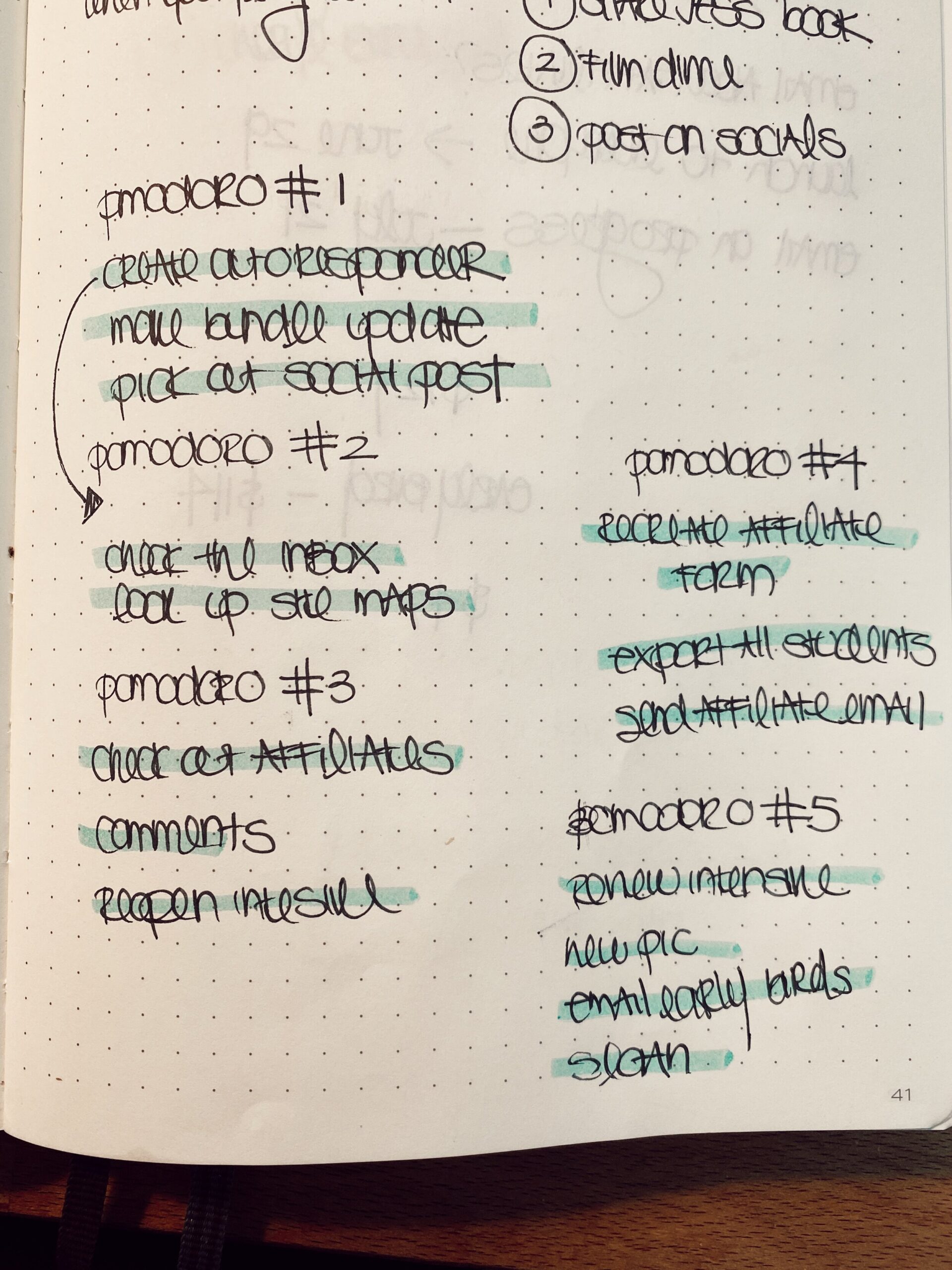I’m often asked how I manage to get so much done in a day.
It’s not that I have more hours than anyone else. And it’s not that I’ve always been this focused and clear.
With a little one at home, my time is actually pretty limited. But the key for me is that my work is focused and unplugged. I avoid distractions. I don’t multitask. And, as a result, I am able to get a lot done in a shorter amount of time.
My secret for getting so much done is simple: I follow the Pomodoro Technique.
The Pomodoro Technique is a time management strategy that focuses on short sprints of focused work (25 minutes) spaced out by quick breaks to help you recharge and keep you from burning out.
I am a big, big fan of focused and undistracted work.
I discovered the Pomodoro Technique a few years ago when I was struggling to focus. For the longest time, I thought multitasking was a good thing, but really, I was limiting the amount I could get done in short spans of time.
I found myself starting a task but then getting distracted by something else entirely, something that wasn’t even on my list for the day. Before long, I would be wondering what I set out to accomplish in the first place.
I needed a strategy for focused work and, in my Googling, I stumbled upon the Pomodoro Technique.
The technique was invented in the 1990s by an entrepreneur who named the system “Pomodoro” after a tomato-shaped timer he would use to track his school hours when he was in university (pomodoro is the Italian word for tomato). Whether it’s a large task or a series of small ones, the technique involves breaking the work down into timed intervals with short breaks in between each one. What’s beautiful is that as you focus, you train your brain to be able to work in short bursts and concentrate like a boss.
One Pomodoro is typically 25 minutes long, followed by a quick 5-minute break.
Pomodoro Technique 101
-
Draft up your to-do list (or pull out your map for the week).
-
Utilize a timer! You can use the timer on your phone, but I recommend finding one that isn’t on your phone to promote undistracted work. I love using the Flow app on my computer to track my pomodoro,s but there are a ton of good options here.
-
Set the timer for 25 minutes and focus on a single task throughout that time block. If I have to tackle a series of smaller things, I will write them out before starting the timer so I can easily flow from one task to the next.
-
When the timer buzzes after 25 minutes, you’ve successfully completed one pomodoro!
-
Write down the results of that focused time block (tracking your progress for growth is part of the fun!)
-
Time for a 5-minute break. I will use this time to drink water or spend a few minutes on my favorite blog sites. Experts recommend taking a screen-free break to really recharge your batteries!
-
Set the timer again and you’re off for another 25 minutes! Technically, four pomodoros (with 5-minute breaks in between) is considered a full set!
-
After you complete four pomodoros, enjoy a longer break of 30 minutes!
For example, I set 25 minutes on the clock before beginning to write this piece. My goal for the 25 minutes was to write this piece. There are still 17 minutes left, so I am going to keep going!
Here’s a helpful diagram by Inkley that maps out the technique:
Some Tips for Getting Started:
001. Stay focused.
You need to remember: this is focused work. The goal is not to do anything but that one task for 25 minutes. No emails (unless the task is going through your inbox). No scrolling. No website searching. Just the task at hand. This is why I recommend putting your phone somewhere else so you can really plug in + focus.
002. Make a plan.
It’s easy to set a timer and start plowing into all the tasks on my to-do list but I like to write down what I am aiming to tackle in the 25-minute period. You know me, I love a good map. Here’s an example of a typical day of pomodoros for me:
I will write the tasks in advance for the focused time block and highlight them as I complete them. It’s a great way for me to gamify my productivity, but it also helps me track what I’ve managed to accomplish so I can look back and see how productive the day was!
003. Predict + track the results.
When it comes to more open-ended tasks that take longer to complete, I like to predict how many pomodoros it will take for me to complete the task and then race against the clock. I can use this information for the next set of tasks I complete. I know that it takes me roughly 2 pomodoros to create a blog post from start to finish, and I can try to improve that time in the future or plan effectively for it within my to-do list.
004. Have fun with it!
This is why I love the Pomodoro Technique— because it is fun to get focused. It’s fun to see how much progress you can make. It’s fun to gamify the process. I even set the timer for simple tasks like cleaning the bedroom or researching recipes for upcoming dinners. Enjoy the process of learning and growing in your productivity. It’s all part of the fun.
I Always Want to Hear From You!
Are you familiar with the Pomodoro Technique? Have you tried it out before? Tell me in the comments below!








I’ve never heard of the Pomodoro method but I’ve always been interested in time management since I read the book Cheaper by the Dozen as a child. The father was an efficiency expert and I loved the book.
I actually started using this technique to pace my body while in the worst of my chronic pains. It was amazing! I started with smaller sets of time with longer breaks but then it’s moved the other way.
I use it for my mental health in the same way. I wake up overwhelmed and anxious so if I know I only have to deal with something for 25 mins instead of the whole I can tackle the day. It helps my brain refocus each 25 mins and before I know my day is off and going.